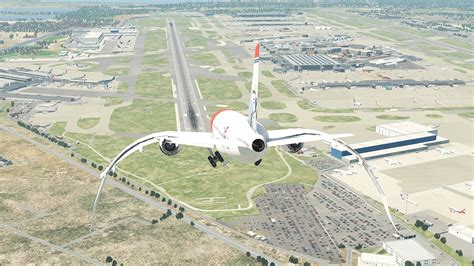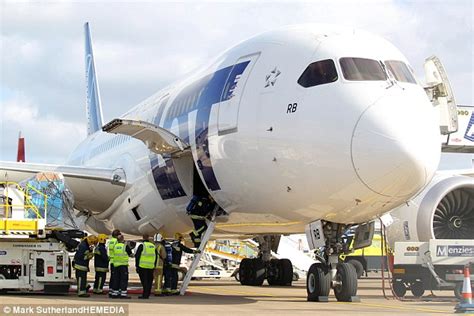
The identities of the captain and first officer of the ill-fated Air India Express flight IX-812 that crashed in Mangalore in 2010, killing 158 people, have been brought back into the spotlight following the release of a damning report that cited pilot error as the primary cause of the disaster. Captain Zlatko Glusica, the pilot-in-command, and First Officer H.S. Ahluwalia were at the controls when the Boeing 737-800 overshot the runway while attempting to land at Mangalore International Airport, plunging into a ravine and resulting in one of India’s deadliest aviation accidents.
The Air India Express Flight 812 crash, a tragedy etched in the memory of Indian aviation history, continues to cast a long shadow more than a decade later. The fateful incident, which occurred on May 22, 2010, claimed the lives of 158 passengers and crew members, leaving only eight survivors. While initial investigations pointed towards a combination of factors, the recent reiteration of pilot error as the primary cause has reignited discussions about aviation safety protocols, pilot training standards, and the overall culture within the airline industry.
The investigation report, while not newly released, has resurfaced in public discourse, highlighting the critical errors made by the cockpit crew during the landing approach. The report’s findings underscore the importance of adherence to standard operating procedures (SOPs), effective communication within the cockpit, and the need for pilots to exercise sound judgment, especially in challenging situations. The crash serves as a stark reminder of the potential consequences of complacency and deviations from established safety guidelines.
Captain Zlatko Glusica, an experienced pilot with thousands of flying hours, was ultimately held responsible for the crash due to his unstable approach and failure to abort the landing despite clear indications that the aircraft was not properly aligned with the runway. First Officer H.S. Ahluwalia, while not directly blamed for the crash, was criticized for failing to effectively monitor the captain’s actions and challenge his decisions, as required by standard crew resource management (CRM) principles.
The final report explicitly stated that the “Captain failed to discontinue the unstabilized approach despite three calls from the First Officer to ‘go around’ and the continued insistence of the Cockpit Voice Recorder (CVR) on ‘Go Around, Go Around.'” This chilling detail paints a picture of a cockpit where crucial warnings were ignored, ultimately leading to the catastrophic outcome.
The aircraft, a Boeing 737-800, was approaching Mangalore International Airport after a flight from Dubai when the incident occurred. Mangalore, known for its “tabletop” runway, presents unique challenges for pilots due to its location on a hilltop, with steep drops at the end of the runway. This type of runway requires precise landing techniques and adherence to strict safety margins.
The investigation revealed a series of errors that contributed to the crash. The aircraft was flying too high and too fast as it approached the runway. The pilots failed to properly configure the aircraft for landing, and they did not make the necessary adjustments to correct their trajectory. Despite repeated warnings from the First Officer to initiate a “go-around” (an aborted landing), the Captain continued the approach, ultimately leading to the aircraft overshooting the runway and crashing into the ravine.
The aftermath of the Air India Express Flight 812 crash led to significant changes in aviation safety regulations and procedures in India. The Directorate General of Civil Aviation (DGCA), the country’s aviation regulatory body, implemented stricter training requirements for pilots, particularly those operating on tabletop runways. Emphasis was placed on improving CRM skills, ensuring that pilots are better equipped to communicate effectively and challenge each other’s decisions when necessary.
The crash also prompted a review of airport infrastructure and safety measures, particularly at airports with tabletop runways. This included improvements to runway safety areas (RSAs), the implementation of engineered materials arresting systems (EMAS), and enhanced training for air traffic controllers.
The families of the victims of the Air India Express Flight 812 crash have long sought justice and accountability for the tragedy. While the investigation report provided some closure, many continue to believe that more could have been done to prevent the crash. They have called for further investigation into the airline’s safety culture and the oversight provided by the DGCA.
The Air India Express Flight 812 crash remains a watershed moment in Indian aviation history. It serves as a constant reminder of the importance of prioritizing safety above all else and the need for continuous improvement in aviation safety protocols, pilot training, and regulatory oversight. The lessons learned from this tragedy must continue to guide the industry’s efforts to prevent similar accidents from occurring in the future.
The incident underscored the critical need for enhanced pilot training, particularly in handling non-standard situations and adhering to go-around procedures. The investigation highlighted deficiencies in the crew’s decision-making process, communication, and overall crew resource management (CRM). The CVR data revealed a breakdown in communication between the captain and first officer, with the first officer’s repeated calls for a go-around being ignored.
Furthermore, the crash raised questions about the adequacy of regulatory oversight and the enforcement of safety standards within the Indian aviation industry. Critics argued that the DGCA needed to be more proactive in identifying and addressing potential safety risks before they led to accidents.
In the wake of the tragedy, Air India Express implemented several measures to improve safety, including enhanced pilot training programs, stricter adherence to SOPs, and a renewed focus on CRM. The airline also invested in new technologies and equipment to enhance safety, such as enhanced ground proximity warning systems (EGPWS) and runway end safety areas (RESAs).
The crash also prompted a broader discussion about the challenges of operating on tabletop runways, which are characterized by their elevated location and steep drop-offs at either end. These runways require pilots to execute precise landings and adhere to strict safety margins. Following the Air India Express crash, the DGCA implemented stricter regulations for operating on tabletop runways, including enhanced training requirements for pilots and improved safety infrastructure.
The Air India Express Flight 812 crash had a profound impact on the families of the victims, who have struggled to cope with their loss and seek closure. Many families have filed lawsuits against Air India and Boeing, alleging negligence and seeking compensation for their losses. The legal battles have been lengthy and complex, with some cases still ongoing.
The legacy of the Air India Express Flight 812 crash continues to shape the Indian aviation industry. The tragedy has served as a catalyst for change, prompting improvements in safety regulations, pilot training, and airport infrastructure. However, the crash also serves as a reminder that aviation safety is a continuous process that requires constant vigilance and a commitment to learning from past mistakes.
Beyond the immediate aftermath, the crash exposed systemic issues within the aviation industry, including pilot fatigue, inadequate training for challenging runway environments, and communication breakdowns within the cockpit. These issues demanded comprehensive reforms to prevent future tragedies.
The investigation into the crash meticulously pieced together the sequence of events leading to the disaster. Investigators analyzed flight data recorder (FDR) information, cockpit voice recorder (CVR) transcripts, and wreckage examination to determine the factors that contributed to the accident. The FDR data revealed that the aircraft was flying too high and too fast as it approached the runway. The CVR transcripts revealed that the first officer repeatedly urged the captain to initiate a go-around, but the captain ignored these warnings.
The investigation also considered the role of fatigue in the crash. The captain had been on duty for several hours before the flight, and investigators questioned whether fatigue may have impaired his judgment and decision-making abilities. Pilot fatigue is a known risk factor in aviation accidents, and the Air India Express crash highlighted the need for better fatigue management practices within the industry.
The tabletop runway at Mangalore International Airport also came under scrutiny following the crash. Tabletop runways are inherently more challenging to operate on than conventional runways, due to their elevated location and the limited margin for error. The Air India Express crash raised questions about whether the safety standards for tabletop runways were adequate and whether pilots were adequately trained to operate in these environments.
The investigation also examined Air India Express’s safety culture and the effectiveness of its safety management system. Investigators found that the airline’s safety culture was lacking in some areas, and that there were deficiencies in its safety management system. These findings raised concerns about the airline’s overall commitment to safety and its ability to effectively manage risks.
The Air India Express Flight 812 crash prompted a global review of aviation safety standards, particularly in relation to tabletop runways and pilot training. Aviation authorities around the world took steps to enhance safety regulations and improve pilot training programs. The crash also led to increased collaboration between airlines, regulators, and manufacturers to share best practices and improve safety performance.
In addition to the immediate safety improvements, the Air India Express Flight 812 crash also had a lasting impact on the families of the victims. The families have struggled to cope with their loss and have sought justice and accountability for the tragedy. They have also worked to raise awareness about aviation safety and to ensure that lessons are learned from the crash.
The Air India Express Flight 812 crash stands as a stark reminder of the risks inherent in aviation and the importance of prioritizing safety above all else. The tragedy underscores the need for continuous improvement in safety regulations, pilot training, and airport infrastructure. It also highlights the importance of a strong safety culture within airlines and a commitment to learning from past mistakes. The legacy of the Air India Express Flight 812 crash will continue to shape the aviation industry for years to come.
The long-term consequences of the crash included not only immediate changes to aviation regulations but also a deeper examination of the psychological impact on aviation professionals and the importance of mental health support within the industry. The stress and pressure associated with flying, particularly in challenging conditions or after experiencing traumatic events, can significantly affect pilot performance and decision-making.
The Air India Express crash also sparked debate about the role of automation in aviation. While advanced technology can enhance safety and efficiency, it can also create new challenges for pilots, particularly when systems fail or when pilots become overly reliant on automation. The crash highlighted the need for pilots to maintain strong manual flying skills and to be able to take over control of the aircraft when necessary.
Furthermore, the crash raised questions about the effectiveness of crew resource management (CRM) training. CRM is designed to improve communication and coordination within the cockpit, but the Air India Express crash suggested that CRM training was not always effective in preventing errors. The crash highlighted the need for more realistic and scenario-based CRM training that prepares pilots to handle a wide range of challenging situations.
The Air India Express Flight 812 crash also had a significant impact on the insurance industry. The crash resulted in substantial financial losses for insurers, and it led to increased scrutiny of airline safety practices and risk management. Insurers have become more demanding in their requirements for airlines, and they are placing greater emphasis on safety performance when setting premiums.
The crash also prompted a renewed focus on accident investigation techniques. The investigation into the Air India Express crash was complex and challenging, and it required the use of advanced forensic techniques to analyze the wreckage and reconstruct the sequence of events. The crash highlighted the need for well-trained accident investigators and for the development of new tools and technologies to improve the accuracy and efficiency of accident investigations.
In addition to the technical and operational aspects of the crash, the Air India Express Flight 812 crash also had a significant social and cultural impact. The crash deeply affected the communities in which the victims lived, and it led to an outpouring of grief and support for the families of the victims. The crash also raised awareness about the importance of aviation safety and the need for greater transparency and accountability within the industry.
The Air India Express Flight 812 crash is a complex and multifaceted event that has had a lasting impact on the aviation industry. The crash has prompted significant improvements in safety regulations, pilot training, and airport infrastructure. It has also led to a deeper examination of the human factors that contribute to aviation accidents. The legacy of the Air India Express Flight 812 crash will continue to shape the aviation industry for years to come.
The advancements in technology and training protocols have also been accompanied by greater emphasis on data analysis and predictive modeling. Airlines and regulatory bodies are increasingly using data to identify potential safety risks and to proactively address them before they lead to accidents. This includes analyzing flight data, maintenance records, and pilot performance data to identify trends and patterns that may indicate potential problems.
The Air India Express Flight 812 crash also highlighted the importance of international cooperation in aviation safety. The crash involved an aircraft that was operated by an Indian airline but manufactured by an American company. The investigation into the crash involved investigators from both India and the United States, as well as experts from other countries. The crash underscored the need for international collaboration to ensure that aviation safety standards are consistent around the world.
Finally, the Air India Express Flight 812 crash served as a reminder that aviation safety is a shared responsibility. Airlines, regulators, manufacturers, pilots, and passengers all have a role to play in ensuring that air travel is safe. By working together and by continuously striving to improve safety performance, the aviation industry can minimize the risk of future accidents.
Frequently Asked Questions (FAQ)
1. What were the primary causes of the Air India Express Flight 812 crash?
The primary cause of the crash was pilot error, specifically the captain’s failure to discontinue an unstabilized approach despite repeated warnings from the first officer to initiate a “go-around.” Factors contributing to the crash included the aircraft’s excessive speed and altitude during the approach, the captain’s disregard for standard operating procedures, and potential pilot fatigue. The tabletop runway at Mangalore International Airport also presented additional challenges.
2. Who were the pilots involved in the crash, and what were their roles?
The captain was Zlatko Glusica, the pilot-in-command, who was responsible for the overall safety of the flight. The first officer was H.S. Ahluwalia, who assisted the captain and monitored the aircraft’s systems. While the captain was primarily blamed for the crash, the first officer was criticized for not being assertive enough in challenging the captain’s decisions.
3. What is a “tabletop” runway, and why is it considered more challenging for pilots?
A tabletop runway is a runway located on a plateau or hill, with steep drop-offs at one or both ends. These runways require precise landing techniques and adherence to strict safety margins, as there is limited room for error. Pilots must maintain a stable approach and land within the designated touchdown zone to avoid overrunning the runway.
4. What changes were implemented in the Indian aviation industry following the Air India Express Flight 812 crash?
Following the crash, the Directorate General of Civil Aviation (DGCA) implemented stricter training requirements for pilots, particularly those operating on tabletop runways. Emphasis was placed on improving crew resource management (CRM) skills, ensuring that pilots are better equipped to communicate effectively and challenge each other’s decisions when necessary. The DGCA also reviewed airport infrastructure and safety measures, particularly at airports with tabletop runways.
5. What is the current status of legal actions filed by the families of the victims?
Many families of the victims filed lawsuits against Air India and Boeing, alleging negligence and seeking compensation for their losses. The legal battles have been lengthy and complex, with some cases still ongoing. The outcomes of these cases have varied, with some families receiving settlements while others continue to pursue legal action.









